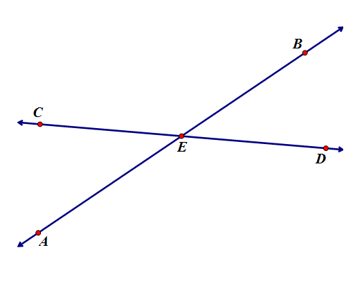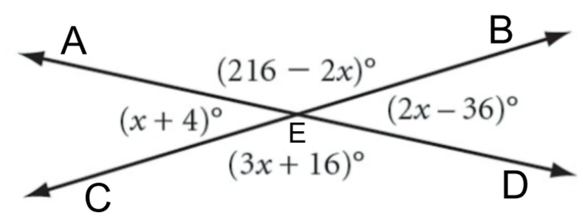2.5 Angle Relationships

Create 2 intersecting lines and label as shown above. Measure the 4 angles and display their measures on the screen.
What can you conclude about angles CEA and DEB? Drag points B and C around. Does the same relationship exist?
What kind of angles are angles CEA and DEB?
Fill in the blanks to complete a conjecture that is always true about vertical angles. Separate your answers with commas. If ______ angles are ___________ angles, then they are _____________.
What kind of angles are angles CEA and CEB?
What can you conclude about angles CEA and CEB? Drag points B and C around. Does the same relationship exist?
Fill in the blanks to complete a conjecture that is always true about linear pairs. If ____ angles form a ______________ of angles, then they ____________________________.
Calculate the ratio of angles CEA and angles DEB. The ratio is found by dividing the two angle measures. What is the ratio of any vertical angles in your sketch? Will this ratio ever change, even if the angles change? Why? Does this convince you the vertical angle conjecture (above) is true?
Calculate the ratio of angle AEC and angle CEB. The ratio is found by dividing the two angle measures. What is the ratio of any linear pair in your sketch? Will this ratio ever change, even if the angles change? Why? Does this convince you the linear pair conjecture is true?
